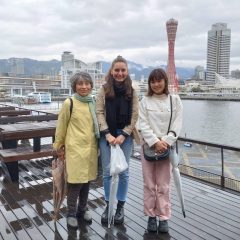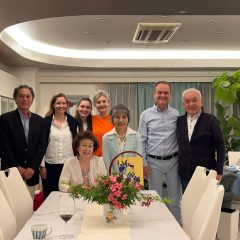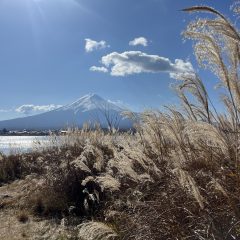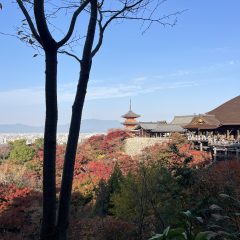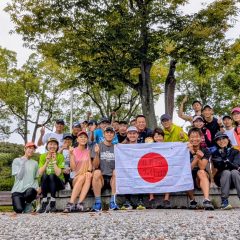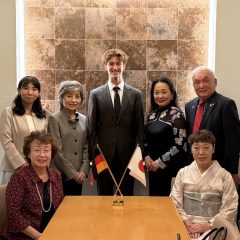☆☆☆fourth report of Felicitas Künlen , 23rd scholarship holder of the GRÜNWALD foundation☆☆☆

Heavens, how time flies: It’s already mid-April! And Oka takes me to a Miyako Odori performance. Dances, songs, and theatrical acts are performed by Maikos and Geikos from the Gion district in Kyoto. The themes draw from classical Japanese culture, depicting everyday life as well as folklore. The nearly 10 brightly and elaborately dressed women glide across the stage with gleaming white socks. This is accompanied by traditional music. A few of our fellow spectators have silently dozed off; the theater visit couldn’t have been more typical of the country. Beforehand, Oka invites me to a Tempura restaurant, which served deliciously fried fish and vegetable pieces. As unfamiliar as Japanese cuisine was at first, I have now grown accustomed to the exotic flavors.
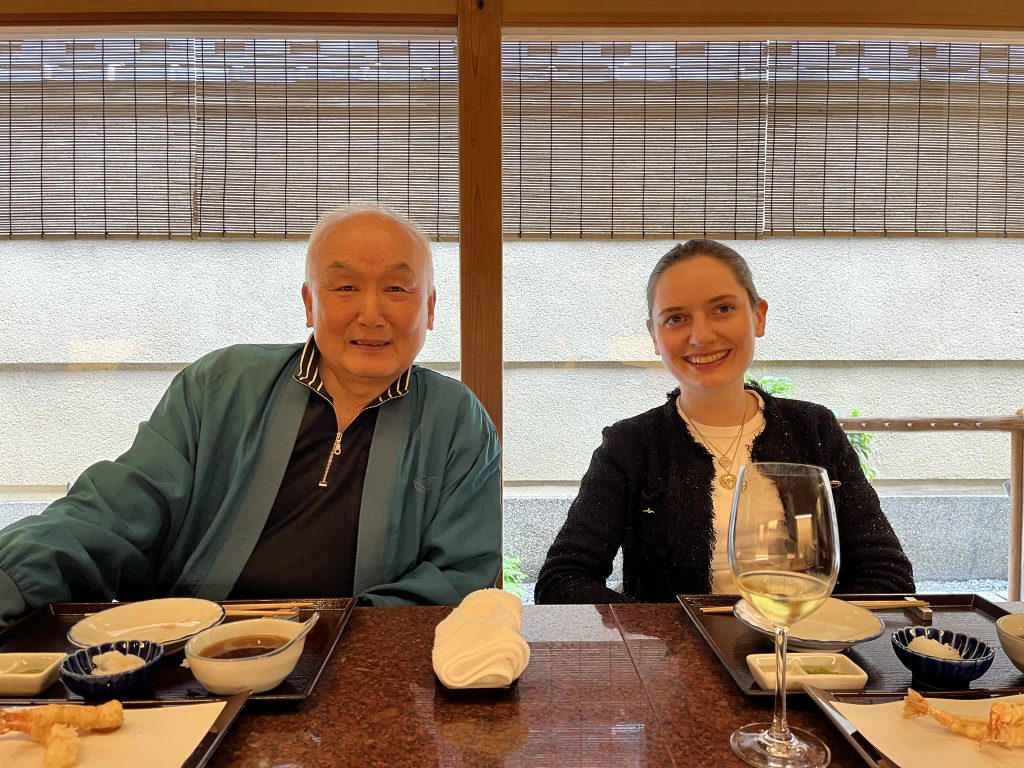
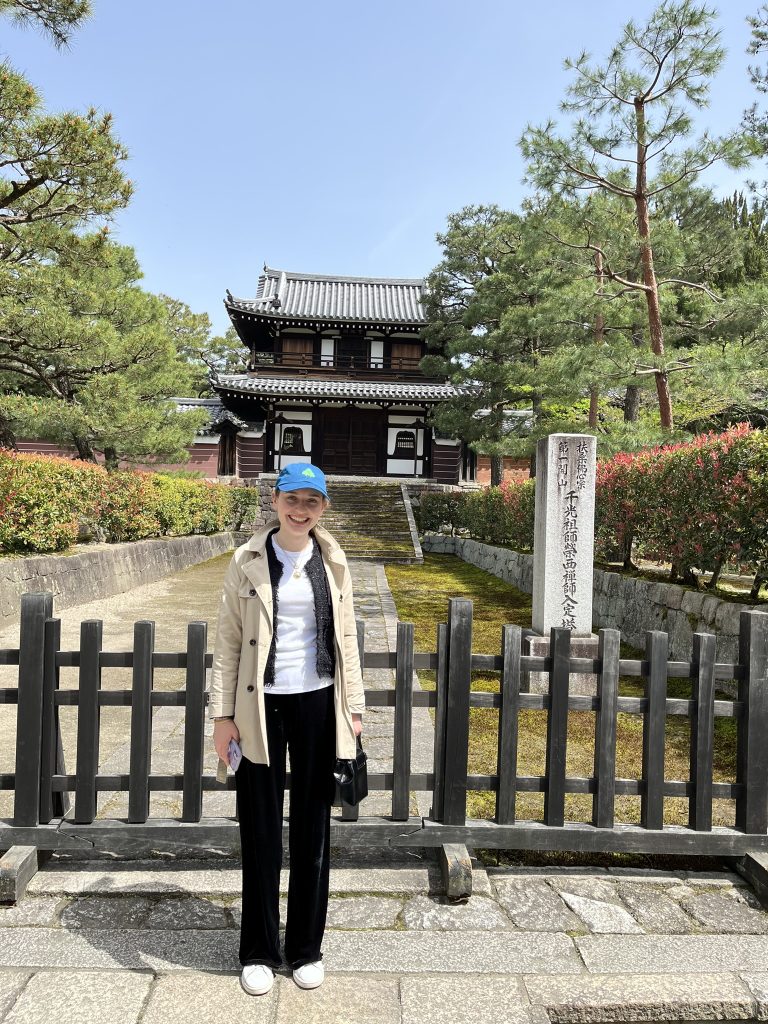
Kyoto-Visit with Oka
Like an overly enthusiastic German tourist, I take the train to Kyoto on Saturday, April 20th, at 6 a.m. My agenda: a 42-kilometer bike tour to cover (almost) all the major sights and temples that the famous temple city has to offer. The so-called “Highlight Bike Tour” is led by an American who has been living in Japan for almost 18 years. Originally coming as an English professor, he’s still here after two Japanese wives. Our group cycles from 7:30 a.m. to 5:30 p.m., starting from the famous Bamboo Grove, passing by the Fushimi Inari Shrine and the Kiyomizu-dera Temple. At the Kinkakuji Temple, better known as the Golden Pavilion, we turn back and pedal for an hour to return to the starting point from early morning. I feel utterly exhausted in the evening, but it was a fantastic day! I wouldn’t have seen so many “highlights” in Kyoto otherwise!
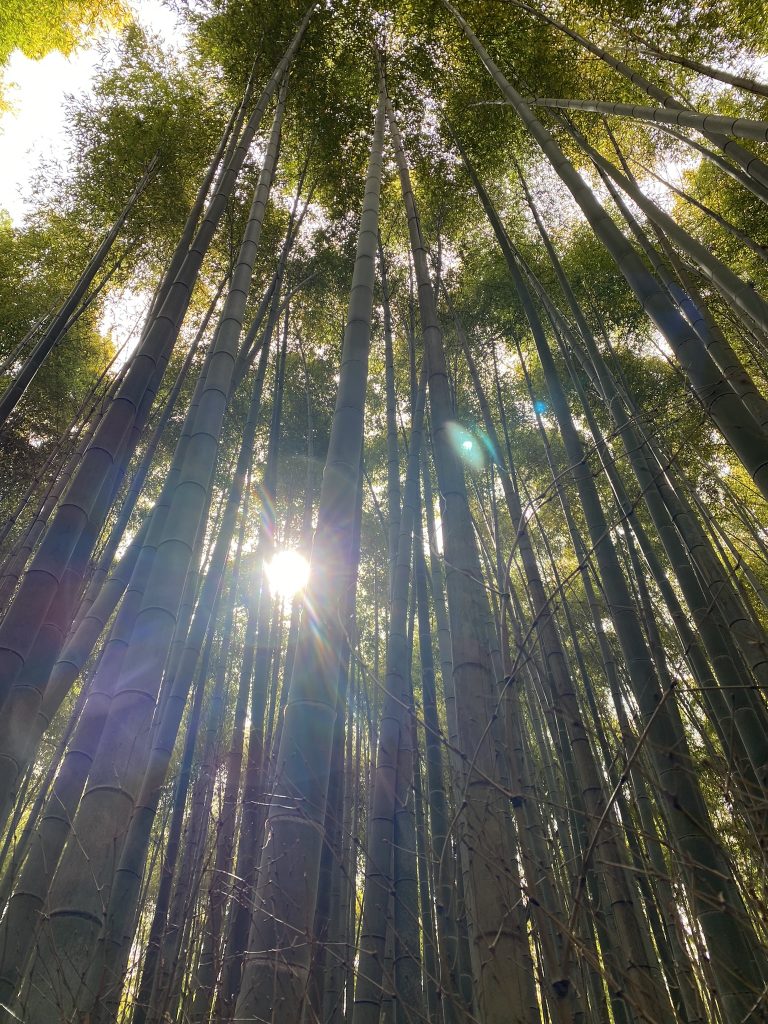

Kyoto-Highlight Bike Tour
The next evening, I’m invited to the lovely Tomimoto family next door. There’s a vegetarian New Year’s dish, which, as the name suggests, is usually only eaten on New Year’s Day. An exception is made for me, and the bento box filled with carefully arranged delicacies is served on April 21st. It’s accompanied by bread from a Japanese baker who learned his craft in France. It was an entertaining time with Takako, Daisuke, and their son Yuuki! Thank you very much for your generous invitation – I thoroughly enjoyed it!

Dinner with Family Tomimoto
A few days later, I visit Universal Studios Japan. After greeting the character Hello Kitty, I “travel” into Harry Potter’s world. Even though I’ve never read such a thing, let alone watched one of its films (yes, such people exist…), it was still amusing to watch the many people in their black wizard robes with the obligatory wand. I sit next to three Japanese people in the Harry Potter roller coaster, who, after the wild ride, ask me where I’m from. Upon my answer, “Doitsu” (Germany), they react with a friendly smile and the typical Japanese “Kawaii” (meaning “cute”). Unfortunately, I’m denied entry to the Super Mario World, as it can only be accessed with a prior reservation (which I didn’t have) or an extra ticket, which is lottery-based through an online process. Unfortunately, I lost that. Disappointed and in rainy weather, I head back home.
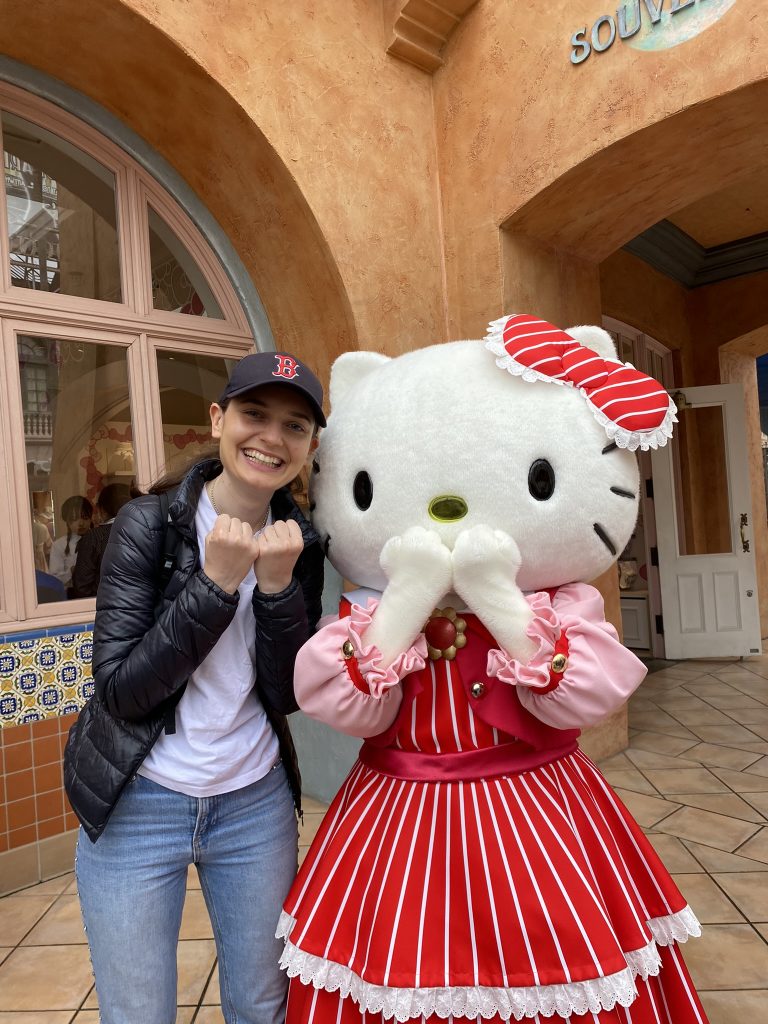

Universal Studio Japan/ Three Japanese Harry Potter Fans
However, two days later, things get more exciting. I accept an invitation from Consul General Melanie Saxinger to her office high up in the Osaka Sky Building. After handing in my passport, locking away my phone, and undergoing a security check, I’m allowed to ask Mrs. Saxinger questions over a cup of tea: I’m interested in the trade relations between Japan and China, her daily work, and her trip to North Korea.
Abrupt change of topic and location: I then immediately head to an Ikebana course. On the way there, I accidentally stumble upon an import store. There, I find Italian crispbread and German rye bread! Finally…! In the breakfast room of a hotel, I meet a deeply relaxed Fooraku: The kind Japanese man is a true master of his craft with over 30 years of experience in flower arranging. An Ikebana arrangement is supposed to bring nature into people’s living space while also representing cosmic order. Through the arrangement, the designer expresses both his relationship with nature and his respective feelings that moved him during the work. As easy as the “whole” looks, it’s actually quite difficult. I feel like I’m back in math class: because my three branches are supposed to be arranged at a certain angle to each other, their length and distance are measured beforehand with a ruler. Fooraku demonstrates, then I follow suit. Spoiler alert: Unlike his Ikebana masterpiece, mine wouldn’t even win a flowerpot…
Fortunately, the master corrects me: I hadn’t arranged the branches at a steep enough angle, and I also hadn’t considered the front side of the branches. After a few skillful moves by Fooraku, my work also looks presentable. Then I’m presented with a certificate. Fooraku tells me in conclusion that all his Ikebana friends are around 90 years old. Ikebana is supposed to promote a long life. Therefore, I’m firmly resolved to continue this art form at home as a new hobby!
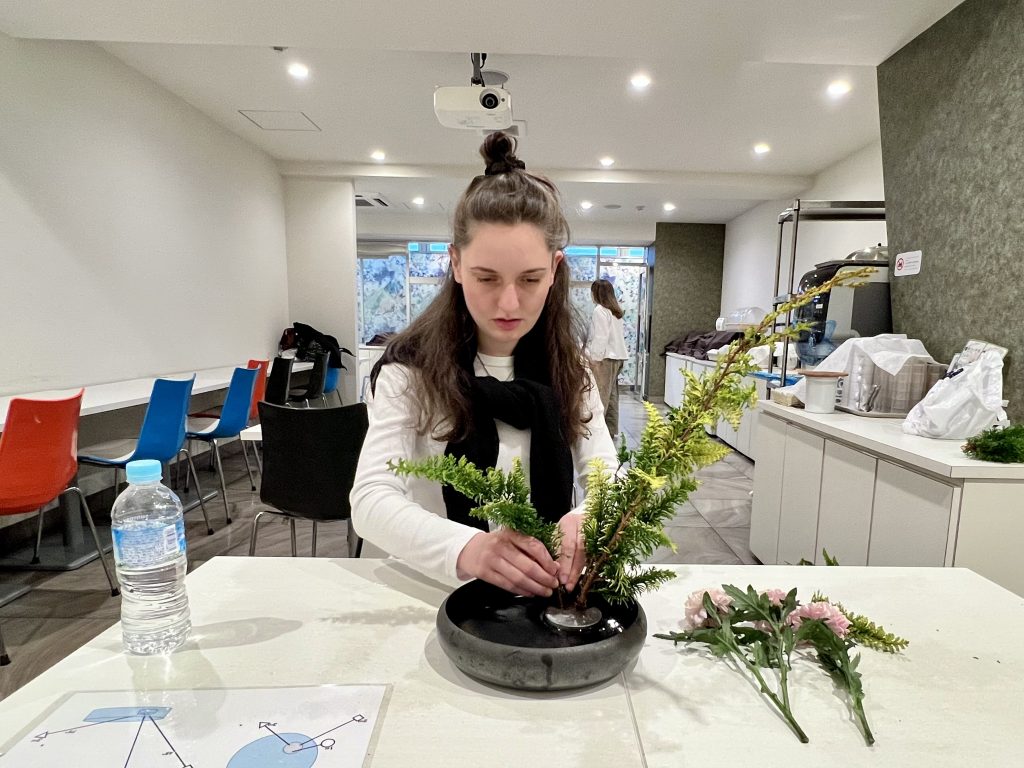
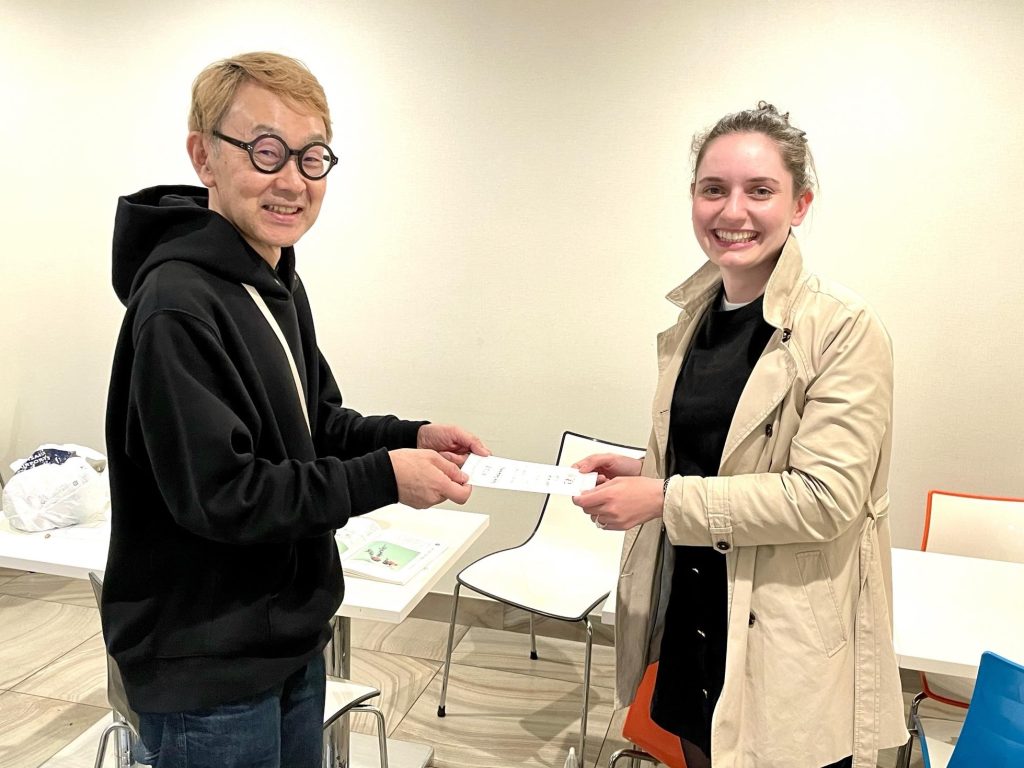
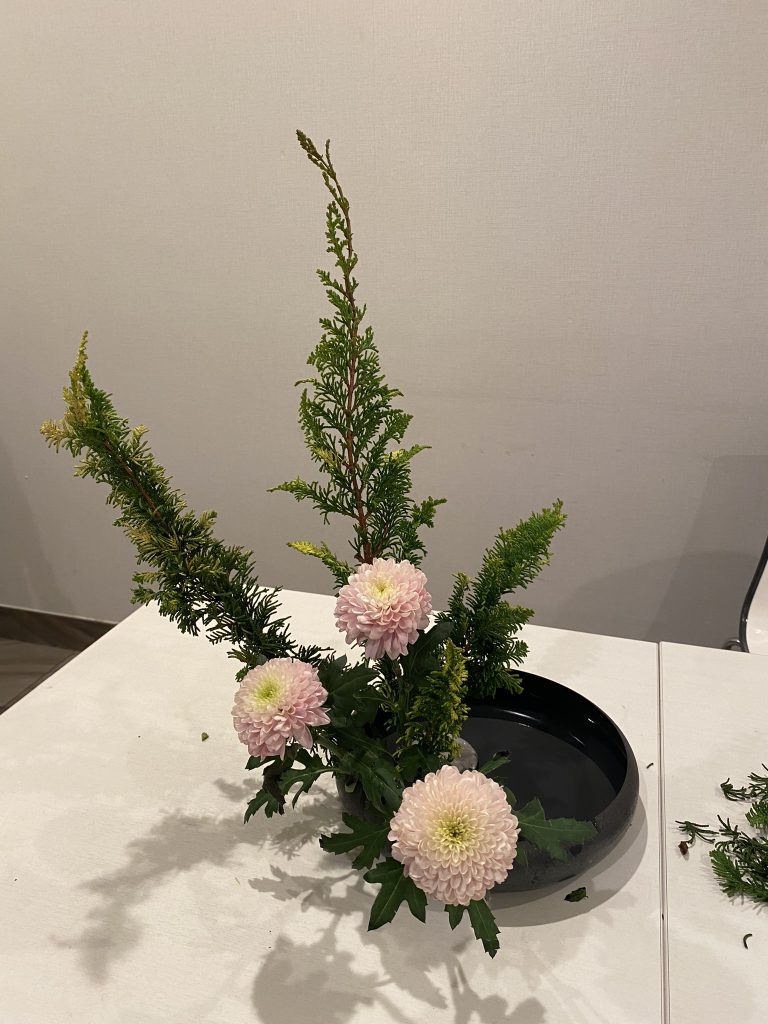
Ikebana-Lesson
Full of enthusiasm, I head to Kyoto the next day to buy some utensils at the oldest Ikebana school in the country. I need a “Kenzan,” also known as a pin frog, to be able to arrange my flowers in the “golden ratio” to each other. Normally, these “pin frogs” are made of heavy metal, but for me, there’s the cheap plastic version. Afterwards, you can admire a temple in the garden of the “flower school.” According to legend, this was the place where Ikebana was invented. Then, I’m invited by a few Japanese students from Kyoto University to a calligraphy class. From 6 to 8 p.m., we brush letters or words on thin paper: From “Kyoto” to “Germany” and “fairy,” everything important is included! Meanwhile, we talk about the weather in Germany, the GDR, and – very importantly – Oktoberfest.

University of Kyoto- calligraphy class
On Sundays, together with the Rotary Club Suita, we head to the Expo Park for a barbecue. The weather is at its best, and the park is very crowded due to the start of the “Golden Week” (holidays in Japan). What a peaceful atmosphere: Japanese extended families are scattered across the lawn for picnics.
Before my mother arrives on Tuesday, May 30th, Oka takes me on a trip to the Minoo Waterfall. With us is the sweet Bonten. Oka’s little white four-legged friend enjoys the waterfall just as much as I do. However, the fried maple leaves, which I eat for the first time, don’t taste good to him – unlike to me.

Mino Waterfall Visit with Oka and Bonten

